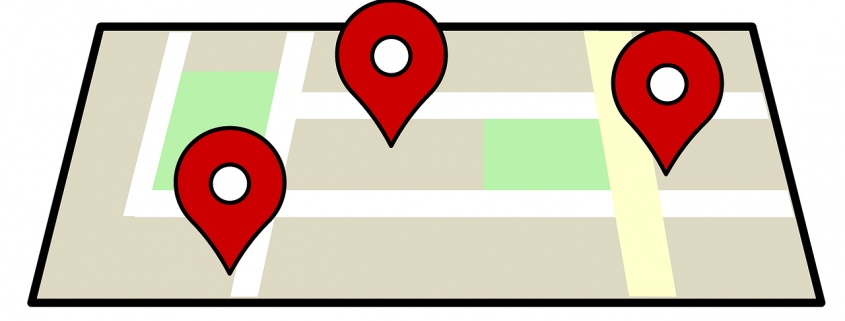What is Location Based Marketing?
Location-based marketing (or location-based advertising) is one of the new and trending topics in the mobile advertising world. Advertisers use the possibility to track users locally and provide location-based advertisements on their mobile devices.
Types of Location Based Marketing
In general, there are two concepts in location-based marketing: push and pull. You can categorize the push approach into two categories: Firstly, the not requested service is more frequently used. This means the user will get án advertisement based on his/her location until he/she decides not to get them anymore.
Secondly, the user can allow certain advertisers which or how many advertisment he/she receives.
The other case is the pull approach in which users are looking for a specific information, like a restaurant close to them. Advertisers who have a location based advertising strategy, can then provide the users with coupons or specific ads to get them to their store.
Location-based advertising is closely related to mobile advertising, which is divided into four types:
- Messaging: like SMS or through the help of an messaging service like WhatsApp,
- Display: Banners, Interstitials or
- Search
- Product placement
How Does Location Based Marketing Work?
Should advertisers want to use push-based LBA, they have to collect data of their potential users, like mobile phone number, email address, first name or other relevant informations.
When having all the necessary data together, the advertiser sends a message asking the user to confirm a subscription for a location based advertising service. If he/she agrees, the company can now provide them with rewards and geographically based offers.
Location based marketing according to the pull model gets in touch when the user is looking for location based information. Companies specialized their service and implemented i.e listings of yellow page companies. Thus, the user sees advertising on his portable device in response to his/her queries.
With the help of ayeT-Studios, you can also target your app marketing campaign to specific countries. Just select from our drop down menu!
What is the Benefit of Location Based Marketing
The most obvious benefit of location based marketing is the accuracy with which users are targeted. For example, if a user buys a specific book in a bookstore and accepts to be in the LBA program, the store can easily retarget the user when he/she is close to the store and present similar books or another book from the same series. The user is much more likely to visit the store again.
The second benefit of location based advertising is the fact that it makes the advertisement personal; it responds to the actual location of a customer and thus has a smaller chance to be recognized as spam.
A third benefit is the humongous amount of location based data collected. Advertisers can use services of data companies to enrich their marketing companies and scale their campaigns to reach out to many more potential customers.
Examples of Location Based Marketing Techniques
In the last part of this blogpost, we want to go a bit deeper and describe some of the possible location based marketing techniques:
Geo-Aware Targeting
Geo-Aware Targeting can be described as the origin of location based advertising, since it first appeared in the year 2010. With the help of geo-targeted data (given by the mobile provider) advertisers can display advertisements in real time on the screen of users who are close to a certain location. This advertising method is very effective to lead customers into a store.
Hyper-Contextual Targeting
Hyper-contextual Targeting is the next level of Geo-Aware Targeting because it combines and interprets different sets of data to a contextual result. This method is used to generate a meaningful advertisement for the user and tries to get direct purchases for the advertiser.
An example of hyper-contextual targeting could be a banner campaign in a suburb area, in which crime rates have been rising. A provider of security systems could target people living in this area and even get his/her banner delivered in the evening and night where the need for safe spaces is more imminent.
Place-Based Targeting
This location based advertising method refers to targeting a specific area in a specific time frame. The best and easiest example would be a big sports match at a stadium. Advertisers with a sports-related background could easily profit if they display advertisements to visitors of the match during this particularly time frame.
Geo-Fencing
This implies setting up a virtual “fence” around a targeted location using longitude and latidude information. This method is trying to get foot traffic i.e. to your store. If you own a shop in a mall you want the visitors to recognize your place. By setting the virtual fence around the borders of the mall, you can offer visitors coupons and special prices. When you own a restaurant you can also run your campaign around lunch or dinner time.
Geo-Conquesting
The fourth LBA method is special because it does not necessarily aim at potential users when they are close to your store, but it targets customers who are close to your competitors businesses. This method is often used by companies of the financial sector, telecommunications or restaurants.
ayet-Studios offers advertisers the option to target specific countries for their app marketing campaigns. It is very fast, easy-to-use and effective. Try it yourself!



